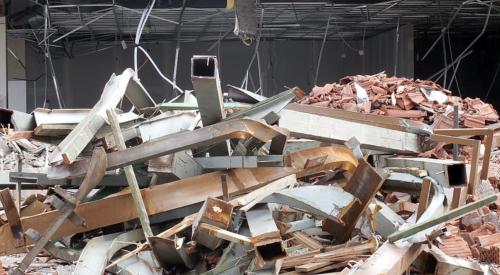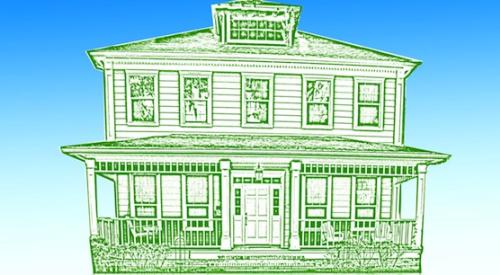|
When Professional Builder was founded in 1936, the housing market was in a slump, along with the rest of the country's economy. From the heights of 1929, the home building market dropped 90 percent in the first four years then flattened out for the middle part of the decade.
Nearly a third of the Depression-era unemployed worked in the building trades, so reviving housing and construction were major focuses of the government, industry and trade press.
 |
Home builders sought work wherever it was available. Many of the stories in the magazine directed builders to the opportunities in the residential remodeling market.
The housing market would not begin its uptick until later that decade, and only then amid the insecurity of rising war in Europe and questions about the role America would play.
To help direct the industry and support its readers, Practical Builder created promotional campaigns to encourage Americans to buy homes. The campaigns captured the tenor of the times as succinctly as any major event or innovation:
- "Smart People Builder before a Boom" — 1938
- "Rebuild America for Beauty" — 1939
- "Building and the Defense of America" — 1941
There were, of course, major events and innovations in the first 10 years of the magazine as well.
- The development of power tools increased production and reduced labor costs in the 1930s.
- Building code publishers such as Building Officials and Code Administrators (BOCA) and Southern Building Code Congress International provided baseline quality assurance to housing construction.
- In 1934, President Franklin Delano Roosevelt created the Federal Housing Authority, giving new structure to the home building industry. As part of the same effort, he created the Title I lending program, making it easier for homeowners to borrow money to build and implement repairs.
- The National Association of Home Builders formed in 1942, giving a strong voice of the builder industry in the halls of Congress.
It was World War II, though, that brought the housing industry and the rest of the country out of the Depression. In 1941, the FHA determined the country would need 600,000 new homes in a 12-month period to house all the war workers. Consequently, the value of construction in 1942 was $13.5 billion compared with the 1933 value of $2.5 billion.
Such a boom led to even more technological advances in home building, including increased reliance on factory-produced housing. At the same time, the industry battled for autonomy as the government argued it could build homes more efficiently than private industry. The successful defense of the industry as led by Practical Builder and the NAHB paved the way for the industry we have now.
By the end of World War II, the home building industry had been transformed from a diverse industry where practitioners built new homes, remodeled homes and developed new commercial projects to an industry of businesses focused almost solely on the craft of home building.
16% The number of homes in 1941 that did not have indoor toilets, according to the U.S. Housing Authority.
70th Anniversary Article Series
- 1936-1945 Depression and War
- 1946-1955 Driving Toward Profit
- 1956-1965 Baby Boom
- 1966-1975 A Revolution
- 1976-1985 Low Energy
- 1986-1995 Clearing the Fog
- 1996-2006 The Big Boom
|












